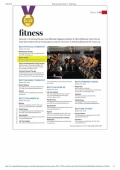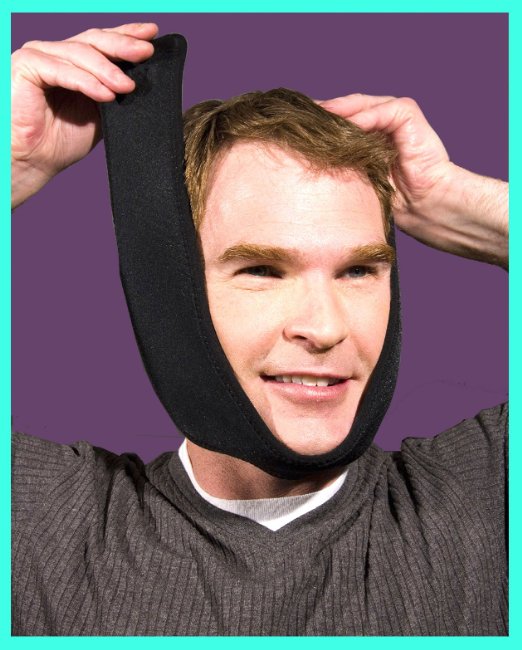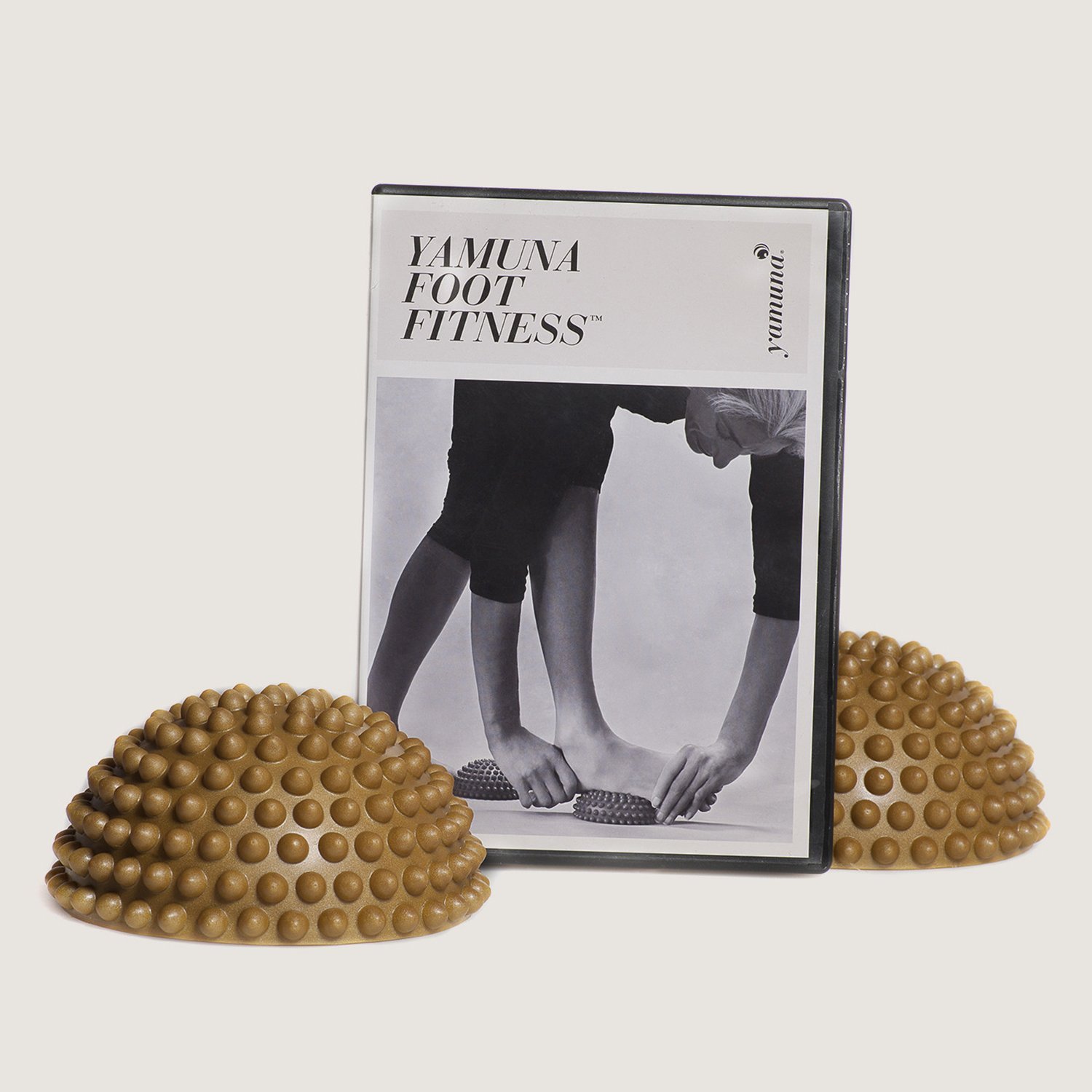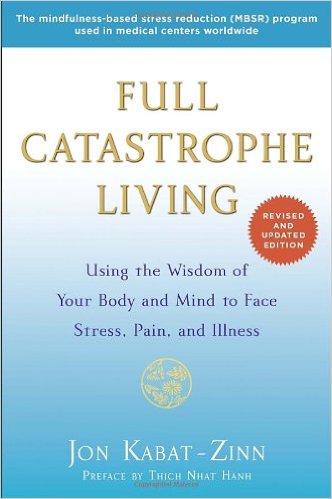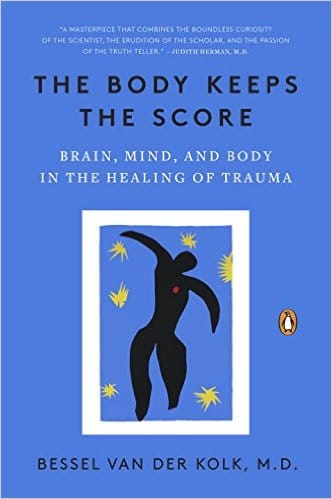Author Archives: Restore Motion
Constipation: What is it and how can physical therapy help?
According to the National Digestive Diseases Information Clearinghouse, someone is constipated if they have a bowel movement less than 3 times a week. This leaves a large range for what is considered “normal” frequency of defecation, from going three times a day (after every meal) to three times a week.
All of us will likely experience constipation at one time or another in our lives. Constipation just means that our food has spent too long in our colon, so more water than usual has been absorbed from the stool leaving it dry and hard to pass. This can be a frustrating symptom, leading to abdominal bloating, gas, increased pressure on the pelvic floor and surrounding organs and back pain. The best treatment is to be aware of the contributing factors and make daily lifestyle changes as needed.
What can lead to constipation?: Factors that may lead to constipation:
- An imbalance in soluble and insoluble fiber intake, or lack of fiber in your diet
- Not drinking enough water
- Not enough physical activity
- Changes in routine (irregular meal intake, traveling, unusual stress)
- Ignoring the urge to go to the bathroom
- Overuse of laxatives
- Pelvic floor muscle dysfunction (we’ll come back to this later in the post)
- Sometimes, constipation is a symptom associated with a specific condition such as from suffering a stroke, rectal prolapse, and irritable Bowel Syndrome or IBS. Constipation is common during pregnancy as the abdominal contents must shift and compress to accommodate a growing baby.
Physical therapy for Constipation
- Help your pelvic floor muscles relax during defecation
When you go to the bathroom, your pelvic floor muscles should relax to “open the gates” and allow passage of stool and urine. Some people lose this normal coordination if they hold tension in their pelvic floor from life stress, or if they’ve had trauma to the pelvis, back, abdominals, or hips (childbirth and surgery). A pelvic floor physical therapist can help your body re-learn proper pelvic floor muscle coordination with biofeedback, manual therapy, and postural education.
- Perform and teach you manual techniques to stimulate movement through your Intestines
In some cases, performing an abdominal massage can stimulate a bowel movement. Your physical therapist can teach you the massage sequence and appropriate amount of pressure. He/she can also perform visceral manipulation, techniques to restore normal movement in your abdominal organs.
- Help you become more physically active
Your physical therapist can prescribe exercises to improve your flexibility and strength so that you can be physically active in the community without pain. Establishing a daily exercise routine is an important step in reducing constipation.
Photo: http://static.businessinsider.com/image/550b24a46da8115622cd5ecd/image.jpg
Written by: Claire Agrawal, PT
Edited by: Miriam Graham, PT
Not So Sweet
Does this sound healthy? Bagel and orange juice for breakfast, turkey sandwich, apple and chips for lunch, that afternoon latte and pasta for dinner. Have you ever thought about how many carbohydrates you eat everyday? The example daily menu tallied up to a grand total of 279 carbohydrates. Optimal daily recommended carb intake depends on many variables such as age, gender, body composition, activity level, and metabolic health, but moderate carbohydrate intake falls between 100-150 carbohydrates/day. However, people who are physically active and have more muscle mass can tolerate more carbs than those who are sedentary. You’re probably asking why you should care about carbohydrates. After all, haven’t we been told to watch the calories and the fat for decades? Those carbohydrates are sugar. Excess sugar consumption has been proven to directly contribute to weight gain. When you eat sugar, your pancreas releases insulin which brings the glucose (from the carbs) into the cells. This glucose is stored as glycogen in our muscle and liver, but if these glycogen stores are already full, the glycogen is stored as fat. In 2012, the British Medical Journal published a study that combed through the literature regarding how body weight and sugar intake were related and indexed over 15,000 potential studies.[1] Sixty-eight studies made the cut of passing the rigid standards and statistical reliability and they all came to the same conclusion: sugar makes people gain weight.
Sugar also elevates dopamine levels which control the brain’s reward and pleasure centers similar those to drugs such as cocaine, morphine and nicotine. Long-term exposure to sugar lead to a reduction of dopamine levels, causing increased sugar consumption to achieve the same level of reward.
So how are we to get out excessive sugar intake under control? In a study published by international research journal PLOS ONE, found withdrawal from chronic sugar exposure can “result in an imbalance in dopamine levels and can be as difficult as going ‘cold turkey’” from a drug. Hopefully we will not have to resort to drugs to break us from the tight grip sugar has on our taste buds. This summer, opt for water instead of juice and soda, or some string cheese instead of the apple and see if you can see a difference in the way you feel by breaking the sugar habit.
[1] Te Morenga, Mallard S., Mann, J., “Dietary sugars and body weight: systematic review and meta-analyses of randomized controlled trials and cohort studies,” British Medical Journal (January 2012): 345:e7492.
Written by: Heather West, PT
Edited by: Reshma Rathod, PT
Seasonal Allergies
It’s the peak of allergy season, since plants are awakening and releasing massive amounts of pollen into the air. Pollen is the biggest trigger of allergies. Trees, grasses, and weeds release these tiny grains into the air to fertilize other plants. The immune system mistakenly sees the pollen as a danger and releases antibodies that attack the allergens. That leads to the release of chemicals called histamines into the blood. Histamines trigger the runny nose and itchy eyes.
Steps you can take to combat season allergies include:
- Identify and avoid your allergens
- Take antihistamines suggested by your health care provider
- Keep your windows closed, remove your shoes outside and bathe pets frequently to stop the spread of allergens inside the house
- Check the pollen count
- Don’t keep too many indoor plants because the soil serves as a place for mold to grow
- Pollen levels peak during morning hours and during hot, dry and windy days, so stay inside if possible
- Avoid spaces with mold, including basements, garages, and barns
- Wash your hair, take a shower, and change your clothes after you’ve been outside.
Writte by: Kristen Bissell
Edited by: Reshma Rathod, PT
Aids and Useful Items
These items have been helpful to our clients. Below recommendations do not constitute an endorsement. Check with your therapist to make sure they are right for you!
Easy application of cold or heat to the jaw and face “Face Caddy”
The face caddy is a Velcro closure pack that allows easy application of heat OR cold to the face and jaw. For additional information, click here.
Self soft tissue release when a foam roller will not do
This stick massage roller has neoprene beads distributed along the metal roller making areas of differing density. It is very helpful for rolling out the lower leg or iliotibial band. Also comes in a shorter “travel size”. For additional information, click here.
Stick massage roller “Pro-TecPTRoller”
Release your feet
Pay attention to the feet that keep you standing and stepping. These hemi-spheres can be used while sitting or standing. You don’t know how tight and stiff your feet are until they are released. For additional information, click here.
Compact roller
Firm foam roller with slight “tread” creating pleasing pressure gradients during rolling. Light weight and hollow, it is good for traveling. This roller is more firm than the white or marbled rollers. For additional information, click here.
Foam roller (short)
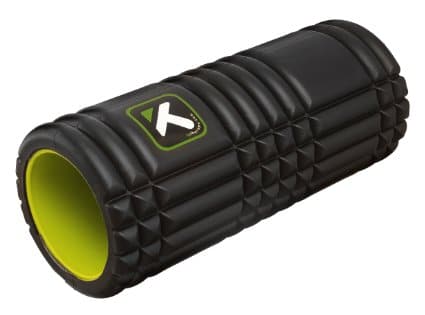
White foam roller assortment
We use these rollers in the clinic. They are relatively durable and not as firm as some other options. The 36” long rollers (full round or half round) are good for supine positioning exercises or rolling. The shorter rollers are more portable and suitable for rolling. For additional information, click here.
Foam roller (assorted lengths, half and full rounds)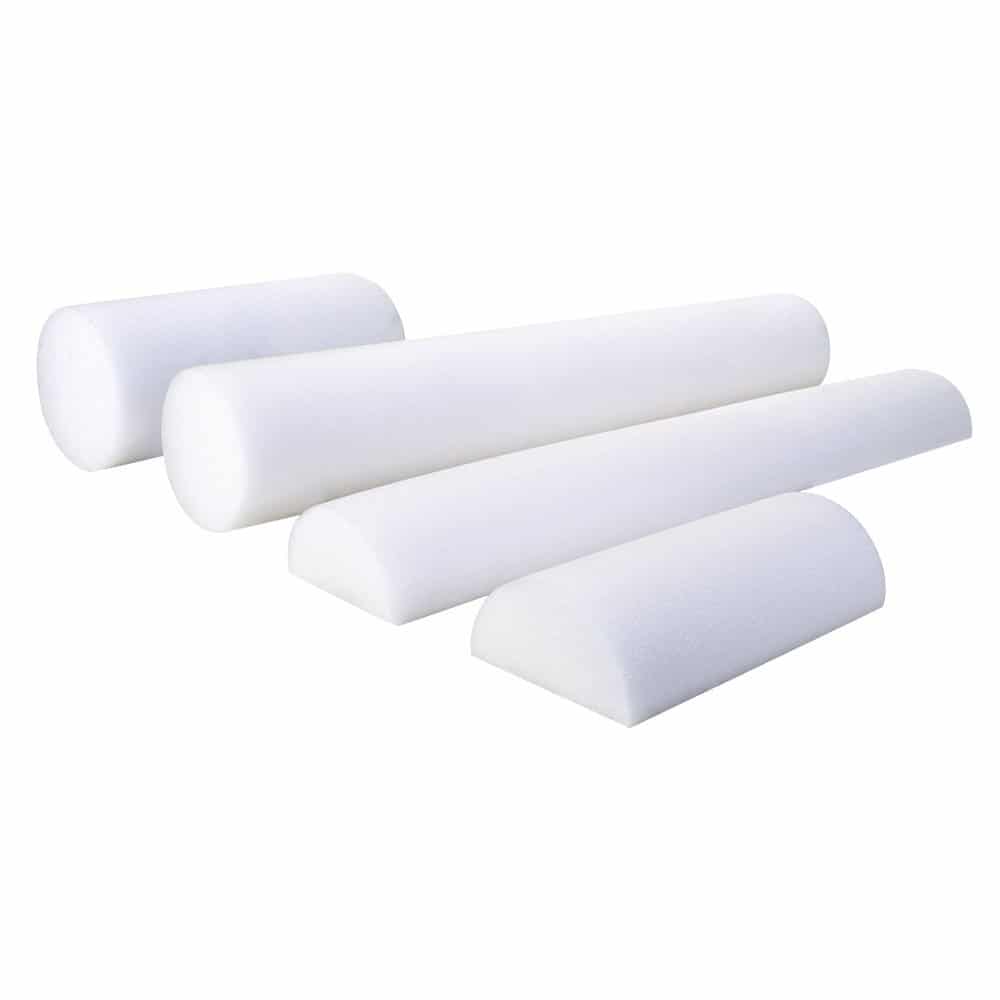
Inflatable lumbar support
The benefit of this lumbar support is its versatility–inflate less for firm surfaces, inflate more for soft surfaces. Deflates for easy travel. Don’t leave it behind! For additional information, click here.
Medic Air back pillo
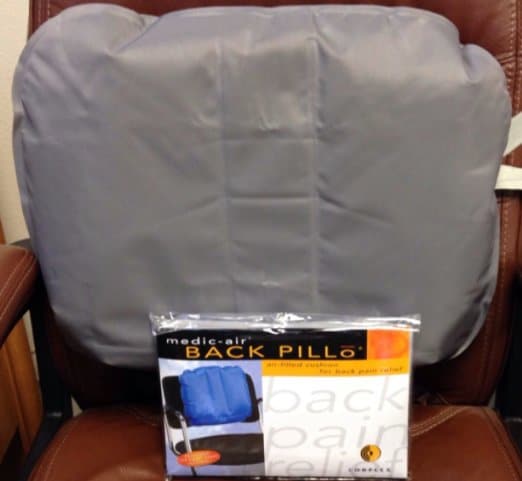
Pain and Stress Management Resources
These items have been helpful to our clients. Below recommendations do not constitute an endorsement. Check with your therapist to make sure they are right for you!
Pain management workbook
Manage Pain Before it Manages You by Margaret A. Caudil. Approachable “bite sized” concepts and activities designed to help you manage and thrive despite pain. For additional information, click here.
Stress Management
Full Catastrophe Living by John Kabat-Zinn. The title says it all. From a leader in the practice of Mindfulness Meditation. For additional information, click here.
Recovery from Trauma
The Body Keeps the Score by Bessel Van der Kolk. How body work can help heal trauma. For additional information, click here.
Restore Motion Friend: Thom Shenk

Meet Thom Shenk, a Rolfer, massage therapist, and longtime friend of Restore Motion. Thom has recently relocated his practice to our Rockville location. We are thrilled to have him here and are thankful for the convenience it provides for patients who benefit from several forms of therapy.
Thom is a Certified Advanced Rolfer and Rolf Movement Practitioner. He combines knowledge of structural integration with licensed massage therapy, craniosacral therapy, visceral manipulation, neurofascial release, and acupressure to provide a holistic and energetic approach to patient care.
Thom loves the outdoors. Here are some fun facts you might not have known about him: Thom…
- spent 5 years living in a Tipi
- worked as an initial attack forest fire fighter
- worked as a professional ski patroller.
- recently backpacked 45 miles through Olympic National Park
Restore Motion Friend: George C. Branche, III, MD

Dr. George Branche is an orthopedic surgeon, sports medicine physician, and friend of Restore Motion. He has been offering his services to players at the CitiOpen tennis tournament here in D.C for over a decade. We had a chance to speak with him at the tournament and ask about recent trends in his practice. His specialization and passion lies in arthroscopic surgical treatment of the shoulder and the knee.
“I’m doing more and more revisions,” he says, “as more people are active well into their older years.” Dr. Branche has seen a steady increase in the number of older patients seeking a remedy for knee and shoulder pain interfering with their active lifestyles. “15 years ago if you saw a 60 year old in our office you might ask him if he was lost, ” he jokes. “These days I’m treating people in their 60’s, 70’s, and even 80’s.”
Restore Motion Friend: Kavon Atabaki
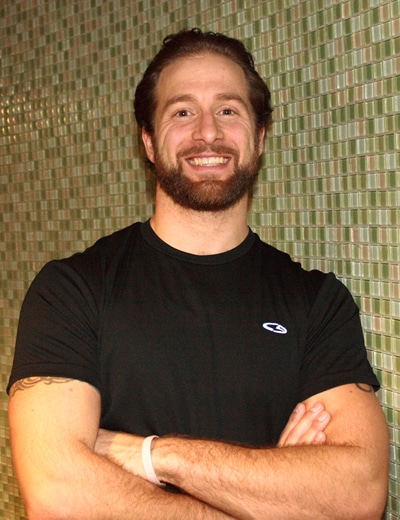
Kavon Atabaki is an ACA and NSPA certified personal trainer at Functional Fitness VA in Falls Church, Virginia. His specialty certifications as a StrongFirst Bodyweight Instructor, StrongFirst Girya II Kettlebell Instructor, Functional Movement Specialist, and Parkinson’s Certified Trainer give him the ability to work with a wide range of clients to meet their fitness goals.
We’ve asked Kavon to share what makes the approach to personal training at Functional Fitness VA unique.
“Having experience with all sorts of ages, shapes, sizes and body types helps me know that every body is different and unique to a certain degree. Principles of movement are constant across the board, but their application needs to fit the person.
At Functional Fitness VA we believe in two major ideas: we’re here to help people Move Better and Get Stronger. This is a simple process. (Simple, not easy.) We first find where movement needs to be improved, maintained, or just stabilized and address that need. After that we work on improving strength in multiple directions and with multiple energy systems. With this approach we’ve found that our clients experience benefits not only in the gym but also improvements reaching into everyday life.”
–Kavon Atabaki
Written by: Kavon Atabaki
Edited by: Claire Agrawal, PT, DPT
Photo Credit:
http://www.functionalfitnessva.com/wp-content/uploads/2010/12/kavon.jpg
What a Pain in the Neck
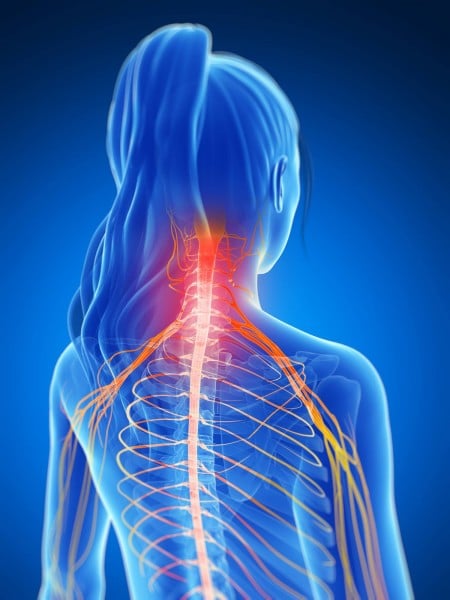
Neck pain is a common reason for doctor visits. It is so common that the topic made it to the Washington Post recently in an article titled “What you need to know about that pain in your neck.”
Here are some facts about neck pain:
- A common cause of neck pain is poor posture during work, rest or leisure.
- Lifting or carrying heavy objects can strain muscles connecting your arm/shoulder and neck.
- Even light weight (or un-weighted) repetitive motions can cause neck pain.
- Excessive tension or stress frequently causes us to hold our jaw, neck and shoulders in a way that leads to pain and headaches.
- The joints of the neck allow a great deal of motion. That is why necks are vulnerable to injury with trauma.
What you need to know before you go to the doctor:
- Majority of neck pain episodes resolve in 2-3 weeks without imaging studies.
- The older we are the more likely neck pathology will be seen on imaging studies even on those people without neck pain.
- Over the counter analgesics (Acetaminophen, Ibuprofen, Naproxen Sodium) are more effective in treating neck pain than muscle relaxants.
- Sleeping with too many pillows or a pillow that is too firm can cause neck pain.
What you can do:
- Use heat or cold pack to soothe muscle aches. Use the type that feels best to you.
- Decrease unnecessary weight in your handbag, book-bag or briefcase.
- Remind yourself to relax your neck, jaw and shoulder muscles while trying to maintain good posture.
- Consider Physical Therapy to help improve muscle and joint balance via exercises for your neck and shoulder girdle.
- If pain has not resolved in time, or if your pain was caused by trauma, see your physician or urgent care clinic.
Written by: Miriam Graham, PT, DPT
Edited by: Claire Agrawal, PT, DPT
Photo Credit:
http://media2.mindandbodychiro.com.au/wp-content/uploads/2015/01/img-neck-pain-spreading-shoulders-450×600.jpg
Link to Washington Post article:
https://www.washingtonpost.com/national/health-science/what-you-need-to-know-about-that-pain-in-your-neck/2016/04/11/5666e97c-a2a3-11e5-b53d-972e2751f433_story.html

